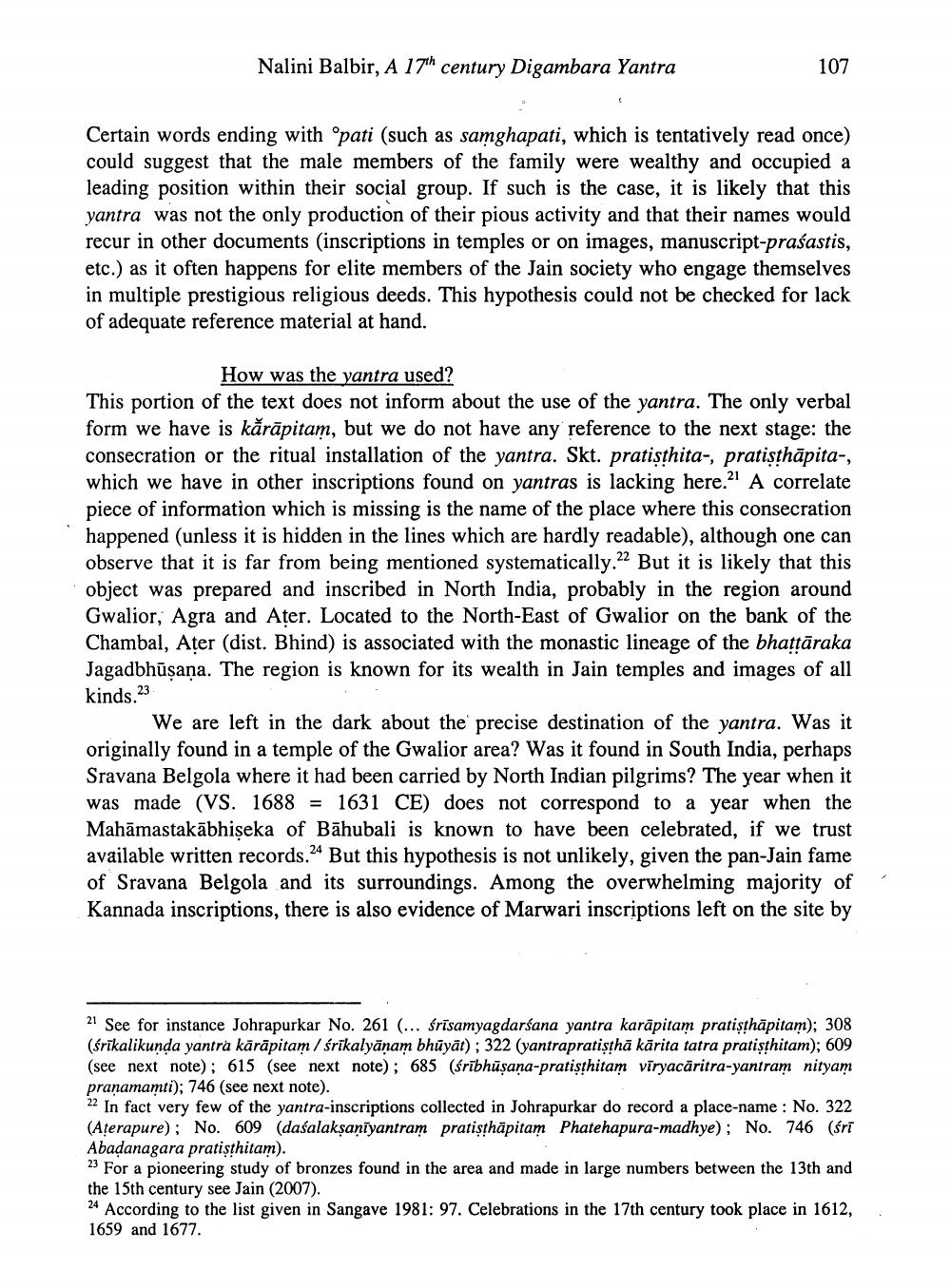________________
Nalini Balbir, A 17th century Digambara Yantra
107
Certain words ending with pati (such as samghapati, which is tentatively read once) could suggest that the male members of the family were wealthy and occupied a leading position within their social group. If such is the case, it is likely that this yantra was not the only production of their pious activity and that their names would recur in other documents (inscriptions in temples or on images, manuscript-praśastis, etc.) as it often happens for elite members of the Jain society who engage themselves in multiple prestigious religious deeds. This hypothesis could not be checked for lack of adequate reference material at hand.
How was the yantra used? This portion of the text does not inform about the use of the yantra. The only verbal form we have is kărāpitam, but we do not have any reference to the next stage: the consecration or the ritual installation of the yantra. Skt. pratisthita-, pratisthāpita-, which we have in other inscriptions found on yantras is lacking here.2A correlate piece of information which is missing is the name of the place where this consecration happened (unless it is hidden in the lines which are hardly readable), although one can observe that it is far from being mentioned systematically.22 But it is likely that this object was prepared and inscribed in North India, probably in the region around Gwalior, Agra and Ater. Located to the North-East of Gwalior on the bank of the Chambal, Ațer (dist. Bhind) is associated with the monastic lineage of the bhattāraka Jagadbhūsana. The region is known for its wealth in Jain temples and images of all kinds.23
We are left in the dark about the precise destination of the yantra. Was it originally found in a temple of the Gwalior area? Was it found in South India, perhaps Sravana Belgola where it had been carried by North Indian pilgrims? The year when it was made (VS. 1688 = 1631 CE) does not correspond to a year when the Mahāmastakābhiseka of Bāhubali is known to have been celebrated, if we trust available written records.24 But this hypothesis is not unlikely, given the pan-Jain fame of Sravana Belgola and its surroundings. Among the overwhelming majority of Kannada inscriptions, there is also evidence of Marwari inscriptions left on the site by
21 See for instance Johrapurkar No. 261 (... śrīsamyagdarśana yantra karāpitam pratisthāpitam); 308 (śrīkalikunda yantra kārāpitam /śrīkalyānam bhūyāt); 322 (yantrapratisthā kārita tatra pratisthitam); 609 (see next note); 615 (see next note); 685 (śrībhūşana-pratisthitam vīryacăritra-yantram nityam pranamamti); 746 (see next note). 22 In fact very few of the yantra-inscriptions collected in Johrapurkar do record a place-name: No. 322 (Aterapure); No. 609 (daśalakṣaṇīyantram pratisthāpitam Phatehapura-madhye); No. 746 (śrī Abadanagara pratisthitam). 23 For a pioneering study of bronzes found in the area and made in large numbers between the 13th and the 15th century see Jain (2007). 24 According to the list given in Sangave 1981: 97. Celebrations in the 17th century took place in 1612, 1659 and 1677.




